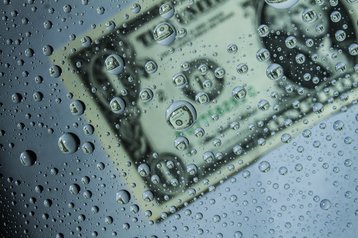ASHRAE has done a lot to change our perceptions of temperature in the data center. It may be a tougher job to shift our ideas about humidity.
Previously, ASHRAE - the American Society of Heating Refrigeration and Airconditioning Engineers - has pushed for an increase in the temperature data centers operate at. This saves money as less energy is wasted in unnecessary cooling. In the next few months, it will produce new recommendations for the data center environment - and this time humidity will be in the spotlight.
ASHRAE will suggest you can save money and energy by expanding the humidity range allowed in your data center.
Shifting your assumptions
As with temperature, ASHRAE will be challenging some long-held assumptions. But the temperature message was easy. It boiled down to “save energy by switching off your chillers and letting the temperature go up.”
Moisture is more complex.
Humidity can be a problem if it is too high or too low. If there is too much moisture in the air, droplets can form, causing metal to rust - and damaging electronics with short circuits.
Paradoxically, too little moisture in the air can also cause electrical problems, this time due to the air’s lack of conductivity. It becomes such a good insulator that static charges build up, and sparks damage your IT kit.
Traditionally, data centers were advised to stick to a “relative humidity” (RH) range between 40 percent and 60 percent. But temperature and humidity are linked - hence the term “relative humidity”. At a higher temperature more moisture will evaporate, so air can get more humid, and the traditional guidance was to keep the level of moisture in the air about half the level where moisture would start to condense out.
And it’s often remarked that moisture content in the air increases its ability to remove heat.
Back in 2008, ASHRAE took a more complex view (explained here by Energy Star), expanding humidity ranges a little and setting a “dew point” to aim at. I won’t explain dew point here: RH is still widely used.
As with temperature, ASHRAE says it’s a waste of energy and money to control humidity too closely, as IT equipment is robust enough to survive in a greater range than previously thought.
ASHRAE fellow Don Beaty told me at the CeBIT event that ASHRAE has researched lower humidities, finding that the risk of static is much smaller than people think. ”We’ve finished a study that proves you can operate at a lower humidity, so we will be rewriting that part of the standard, and it will drop down to eight percent RH.” said Beaty.
This will find its way into official guidance during the course of this year.
However, it’s already causing debate: for instance, ASHRAE may have tested lower humidity in various settings, but the risk of static discharge would surely depend on what kind of IT kit you have and how well grounded and bonded the system is. For instance, tape drives may tolerate less humidity (or more) than hard drives or solid state storage.
When the advice arrives, the industry will be closely checking how well these issues are handled.
Will it help our cash flow?
But is it worth it? A change like this will only go through if it has some concrete benefits. In some data centers, bigger humidity ranges could be a big money saver. When humidity is seen as too low, some sites use electrically-generated heat to evaporate water and add moisture to the air stream. But that is a bit old-school, and adiabatic humidifiers are now available.
Removing moisture can also be energy intensive - it’s sometimes done by cooling the air to its dew point so moisture condenses - and then reheating it, using more electricity.
To work out how much energy is wasted in this way - and how worthwhile the changes are - we’d need to know how many sites manage humidity this way, and how often they are actively adding or removing humidity.
ASHRAE thinks there’s enough wasted energy out there to make a pronouncement. When the recommendations arrive, we are looking forward to the discussion.
A version of this article appeared on Green Data Center News.




